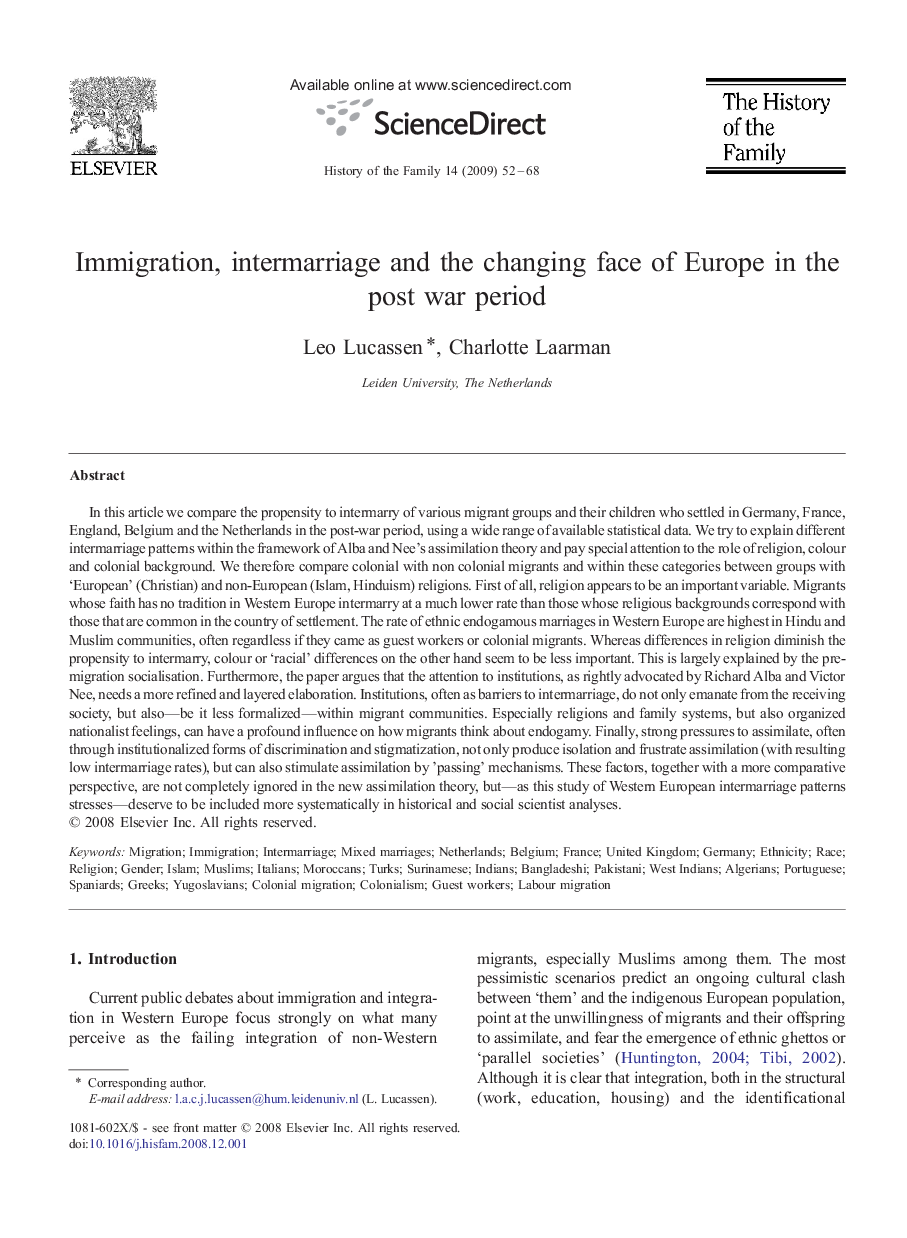| کد مقاله | کد نشریه | سال انتشار | مقاله انگلیسی | نسخه تمام متن |
|---|---|---|---|---|
| 1127010 | 1488647 | 2009 | 17 صفحه PDF | دانلود رایگان |
عنوان انگلیسی مقاله ISI
Immigration, intermarriage and the changing face of Europe in the post war period
دانلود مقاله + سفارش ترجمه
دانلود مقاله ISI انگلیسی
رایگان برای ایرانیان
کلمات کلیدی
BangladeshiMoroccansGuest workersGermany - آلمانIntermarriage - ازدواج مجددColonialism - استعمارIslam - اسلامBelgium - بلژیکTurks - ترک هاGender - جنسیتReligion - دینIndians - سرخپوستانFrance - فرانسهEthnicity - قومیتRace - مسابقهMuslims - مسلمانانMigration - مهاجرتLabour migration - مهاجرت کارImmigration - مهاجرت یا کوچNetherlands - هلندUnited Kingdom - پادشاهی متحده بریتانیاPakistani - پاکستانیPortuguese - پرتغالیGreeks - یونانیان
موضوعات مرتبط
علوم انسانی و اجتماعی
علوم انسانی و هنر
تاریخ
پیش نمایش صفحه اول مقاله

چکیده انگلیسی
In this article we compare the propensity to intermarry of various migrant groups and their children who settled in Germany, France, England, Belgium and the Netherlands in the post-war period, using a wide range of available statistical data. We try to explain different intermarriage patterns within the framework of Alba and Nee's assimilation theory and pay special attention to the role of religion, colour and colonial background. We therefore compare colonial with non colonial migrants and within these categories between groups with 'European' (Christian) and non-European (Islam, Hinduism) religions. First of all, religion appears to be an important variable. Migrants whose faith has no tradition in Western Europe intermarry at a much lower rate than those whose religious backgrounds correspond with those that are common in the country of settlement. The rate of ethnic endogamous marriages in Western Europe are highest in Hindu and Muslim communities, often regardless if they came as guest workers or colonial migrants. Whereas differences in religion diminish the propensity to intermarry, colour or 'racial' differences on the other hand seem to be less important. This is largely explained by the pre-migration socialisation. Furthermore, the paper argues that the attention to institutions, as rightly advocated by Richard Alba and Victor Nee, needs a more refined and layered elaboration. Institutions, often as barriers to intermarriage, do not only emanate from the receiving society, but also-be it less formalized-within migrant communities. Especially religions and family systems, but also organized nationalist feelings, can have a profound influence on how migrants think about endogamy. Finally, strong pressures to assimilate, often through institutionalized forms of discrimination and stigmatization, not only produce isolation and frustrate assimilation (with resulting low intermarriage rates), but can also stimulate assimilation by 'passing' mechanisms. These factors, together with a more comparative perspective, are not completely ignored in the new assimilation theory, but-as this study of Western European intermarriage patterns stresses-deserve to be included more systematically in historical and social scientist analyses.
ناشر
Database: Elsevier - ScienceDirect (ساینس دایرکت)
Journal: The History of the Family - Volume 14, Issue 1, 2009, Pages 52-68
Journal: The History of the Family - Volume 14, Issue 1, 2009, Pages 52-68
نویسندگان
Leo Lucassen, Charlotte Laarman,